Donation Management: Essential Strategies and Best Tools
Updated On: November 12, 2025 by Aaron Connolly
What Is Donation Management?
Donation management means you record, track, and actually use donation data to connect with supporters. It’s about gathering details from every gift, then using that info to thank donors and plan your next fundraising move.
Key Functions of Donation Management
Recording Donation Information
You need to jot down the basics for every gift. That means the donation date, the amount, and how the donor paid. Don’t forget to note which campaign or appeal brought in the money.
Managing Donor Data
Good donation management keeps donor contact details safe and organised. You collect names, addresses, emails, and phone numbers. This makes it possible to stay in touch and build relationships.
Sending Thank You Messages
Donors want to feel appreciated. Aim to send thank you letters or emails within 48 hours if you can swing it. Personal notes always beat generic ones.
Creating Reports
Regular reports help you spot which fundraising efforts actually work. You’ll see which campaigns pull in the most support. Reports also highlight trends in giving.
Planning Future Fundraising
Looking back at past donations lets you plan smarter campaigns. You can see when donors usually give and how much. That makes your next appeal way more effective.
Difference Between Donation and Donor Management
Donation Management Focus
Donation management is all about the gifts themselves. You track when money arrives, how much comes in, and which campaigns generate donations. The focus stays on those transactions.
Donor Management Focus
Donor management digs into the people behind the gifts. You learn about their interests, how they like to be contacted, and their giving history. Building real relationships with supporters becomes the goal.
How They Work Together
You need both systems working together. Donation data shows what happened. Donor data tells you who made it happen and maybe even why.
Most modern systems blend both functions. A donor management system keeps donations and donor info in one spot. That makes it way easier to get the full picture.
Importance for Nonprofits
Building Stronger Relationships
Good donation management helps you connect with supporters on a deeper level. When you know donor preferences, you can send messages that actually matter to them. Personal communication boosts retention rates.
Saving Time and Money
The right system cuts manual work. You can auto-generate thank you notes and receipts, freeing up staff for more important stuff.
Making Better Decisions
Donor data shows what fundraising methods succeed. You can focus energy on what works best. This means less wasted time and better results.
Staying Organised
Without a solid system, donations can get lost or misrecorded. Proper management ensures every gift gets processed correctly. Donors get the acknowledgment they deserve.
Meeting Legal Requirements
You need accurate records for taxes and charity regulations. Good donation management keeps you compliant with reporting rules.
Core Features of Donation Management Systems
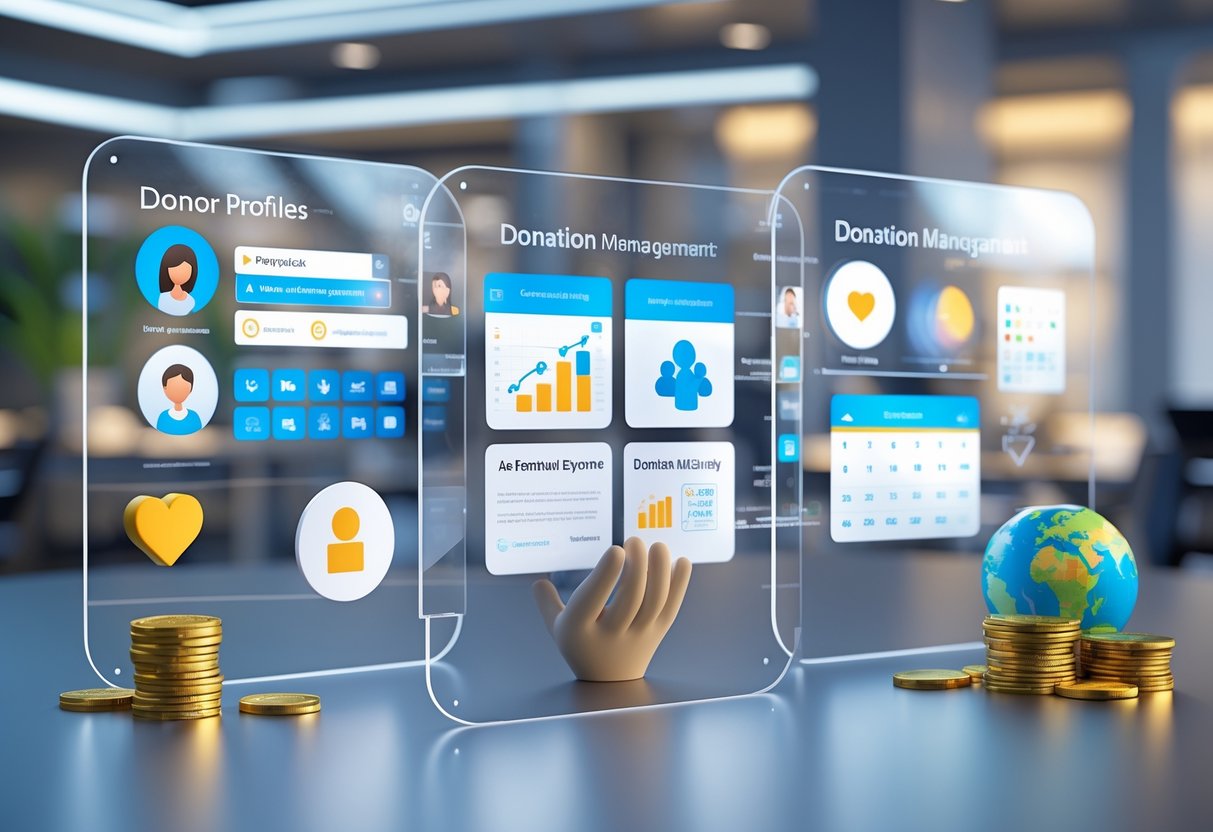
Modern donation management platforms focus on four main capabilities. They help nonprofits track donations, connect with other tools, watch giving patterns, and process payments securely.
These features work together to give you a clear view of your donor database and make admin work less of a headache.
Donation Tracking and Reporting
A solid donation tracking system forms the backbone of any good donor database. It records every gift, whether it’s a one-time donation or a recurring one.
Most platforms automatically grab key details like donation amounts, dates, campaign sources, and donor info. This data feeds into reports that help you spot fundraising trends.
Key tracking capabilities include:
- Real-time donation monitoring
- Campaign performance stats
- Donor engagement history
- Pledge tracking for future gifts
- Tax receipt creation
Reporting features help you spot your most valuable supporters and strongest campaigns. You can run reports showing monthly giving trends, average gift sizes, and donor retention.
Some advanced systems go further and track donor interactions beyond money, like event attendance or email opens.
Integration with Other Nonprofit Tools
Donation management systems really shine when they connect with your current software. Most offer ready-made integrations with popular nonprofit tools.
Common integration options include:
- Email marketing tools (Mailchimp, Constant Contact)
- Accounting software (QuickBooks, Xero)
- Website builders (WordPress, Squarespace)
- Event management tools
- Social media
These connections save you from entering the same data twice. If someone donates on your site, the info flows straight into your donor database and accounting software.
API access lets you build custom integrations if you need something specific. That way, your donation system can grow with your organisation.
Gift Amount and Frequency Tracking
Knowing how much and how often people give helps you plan smarter fundraising. Modern systems track past giving and can even predict future donations.
The software watches each donor’s giving habits—average amounts, how often they donate. This helps you spot potential major donors or people ready to give more.
Gift tracking features usually include:
- Average donation per donor
- Giving frequency analysis (monthly, yearly, etc.)
- Recognition of seasonal giving patterns
- Lifetime value projections
- Identifying lapsed donors
You can split donors into groups based on their giving history. For example, monthly donors might get different messages than annual ones.
The system also tracks pledges and sends reminders for upcoming payments. This cuts down on admin work and helps you collect more pledges.
Payment Methods Supported
Donors want options. Good donation management systems support lots of payment methods and process payments securely.
Standard payment methods include:
- Credit and debit cards
- Direct debit for recurring gifts
- PayPal and digital wallets
- Bank transfers
- Mobile payments like Apple Pay or Google Pay
The best systems handle payments right on your donation pages, so donors don’t get sent to some third-party site. This makes giving easier and reduces drop-off.
Strong security features protect both your donors and your organisation. Look for PCI compliance and encryption.
Recurring donation features let supporters set up automatic monthly or yearly gifts. These systems even retry payments if cards expire, so you don’t lose donations.
International payment options open the door to global fundraising, though you might pay extra fees depending on your platform.
Choosing the Right Donation Management Software
The right donation management software can really make a difference in your fundraising. You’ll want to think about your nonprofit’s needs, how the system will grow with you, and whether it fits your unique processes.
Factors to Consider
Start by figuring out what your nonprofit actually needs from donor management software. Make a list of your pain points and fundraising goals.
Essential features to look at:
- Donor database size and complexity
- Online donation processing
- Campaign management tools
- Reporting and analytics
- Integration with your other systems
Budget matters here. Most nonprofit CRM tools have tiered pricing based on features and donor records. Don’t forget about setup, training, and possible add-on costs.
Think about your team’s technical skills. Some systems need lots of training, while others have user-friendly interfaces that staff can pick up quickly.
Good user support is huge. Choose providers with solid training resources, responsive help, and active user communities.
Payment processing questions:
- What are the transaction fees?
- Which payment methods are supported?
- Is the system PCI compliant and secure?
- Can you handle recurring donations?
Software for Growing Nonprofits
Growing nonprofits have their own unique headaches when picking donor CRM software. You need a system that won’t slow you down as your donor list gets bigger.
Look for platforms with flexible user licensing. Some charge per user, others give unlimited access within certain pricing levels. This can really affect your costs as you grow.
Database size matters too. Make sure your donation software can handle more donor records without bogging down. Cloud-based options often scale automatically.
Key scalability signs:
- Unlimited donor storage
- Multiple user access levels
- Advanced segmentation
- Automated workflows
- API access for custom needs
Choose platforms with strong automation tools. As your donor base grows, manual processes just won’t cut it. Look for features like automated thank-yous, recurring donation processing, and smart communications.
Integration gets even more important as you scale. Your system should connect easily with email marketing, accounting, and your website.
Customisation and Scalability
Modern donation management software should fit your organisation—not the other way around. Look for platforms that let you customise fields, workflows, and reports.
Custom donor profiles let you track info that matters to your cause. Maybe you need to log volunteer hours, event attendance, or program participation. Your system should handle it.
Custom workflows make sure the software matches how your team actually works. Some nonprofits need complex approvals for big gifts, while others want specific communication for different donor types.
Customisation features to look for:
- Custom data fields and forms
- Personalised dashboards
- Flexible communication templates
- Configurable campaign structures
- Tailored reporting
Scalability isn’t just about more donors. Your platform should handle new fundraising methods, extra team members, and changing engagement strategies.
Think about the future when picking donor software. Even if you’re small now, you might need enterprise features down the road. Choose a platform you can upgrade without starting over.
Top Donation Management Platforms
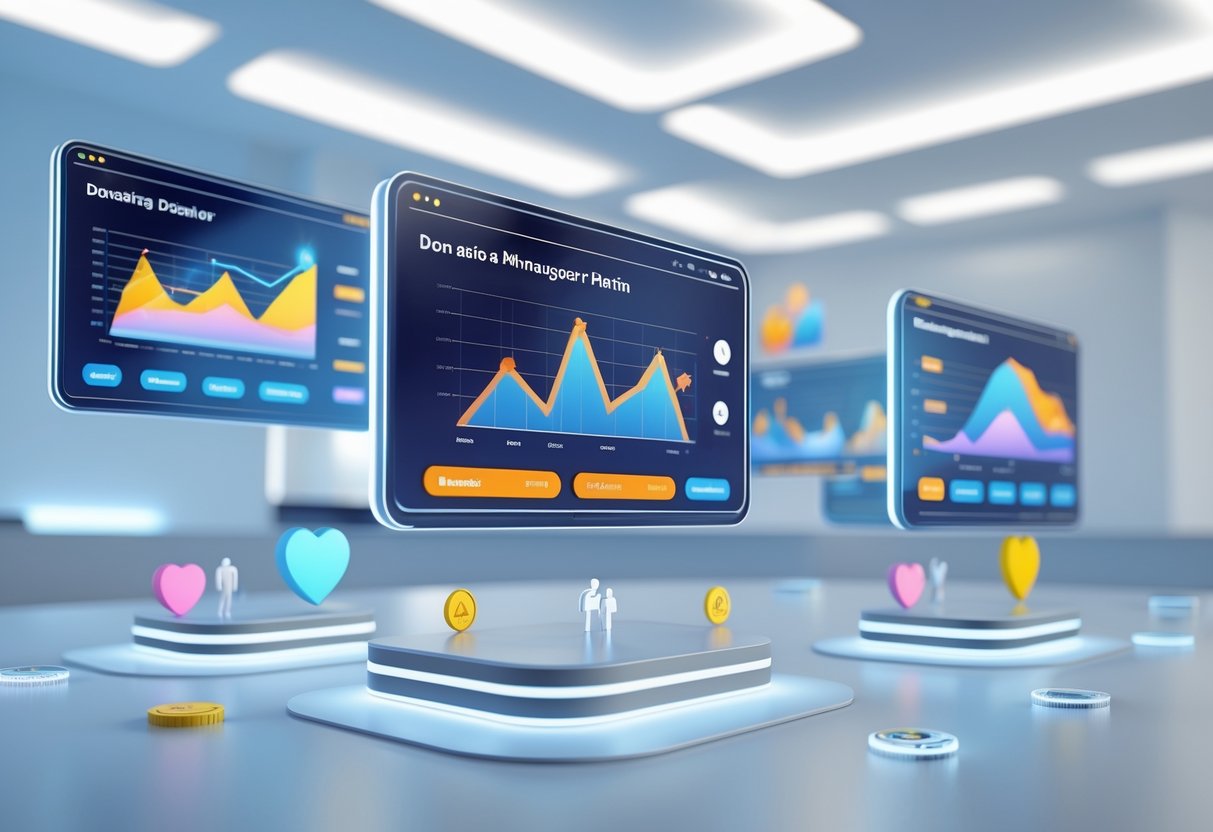
Three platforms really stand out: Bloomerang, Donorbox, and DonorPerfect. Each brings something special—Bloomerang is great for donor retention, Donorbox is simple and affordable, and DonorPerfect packs in advanced fundraising tools.
Bloomerang Overview
Bloomerang puts a big focus on donor retention with its CRM system. We’ve found their dashboard super helpful for tracking donor engagement over time.
The platform comes with custom reporting and engagement meters. These let you spot donors who might be slipping away. Bloomerang also covers membership management, event planning, and major gift tracking in one package.
Key features include:
- Unlimited online giving forms
- Email marketing integration
- Tribute and memorial gift processing
- Recurring giving programs
- Grant management tools
Pricing starts at £95 per month (about $119). It’s a solid choice for mid-sized nonprofits that want rich donor analytics.
You can connect Bloomerang with lots of third-party apps. That makes it pretty easy to fit into your existing systems.
Donorbox Highlights
Donorbox stands out for its easy setup and clear pricing. We suggest it for groups that want to start collecting donations fast, without a lot of fuss.
The platform charges just 1.75% per transaction and skips setup fees. That’s budget-friendly for smaller organisations or anyone new to online fundraising.
Key features:
- Pop-up donation widgets for your website
- Multiple payment options (credit cards, Apple Pay, PayPal)
- Monthly recurring donations
- Goal tracking meters
- Multi-currency support
Security is solid, with SSL encryption and tokenised card storage via Stripe. Donorbox connects easily to WordPress, Squarespace, and similar site builders.
It also accepts bank transfers along with standard payment methods. That flexibility helps you reach donors who prefer different ways to give.
DonorPerfect Features
DonorPerfect offers comprehensive fundraising management tools built for growing organisations. Their focus on monthly giving program development really stands out.
You get dashboard analytics that show what drives donations. This helps you understand your donor base and improve your strategy.
Advanced features:
- Automated gift entry from online forms
- Personalised email campaigns with Constant Contact
- Digital wallet support (PayPal, Venmo)
- Detailed reporting and analytics
- Receipt management
DonorPerfect works well for organisations running several fundraising campaigns. The system tracks different revenue streams and gives clear reports on each one.
The platform supports recurring donations with a variety of payment methods. This helps you build steady, predictable monthly income.
Managing Donor Data Effectively
Good donor data sits at the heart of successful fundraising. The right collection methods, strong security, and smart analytics help nonprofits build real relationships and keep supporter info safe.
Data Collection Essentials
Let’s talk about the information we actually need to get a better sense of our donors. We always start with the basics: email addresses, phone numbers, and postal addresses. These details make up the backbone of any decent donor database.
We also collect demographic information so we can fine-tune our approach. Different age groups have their own giving habits—millennials usually prefer cards, while baby boomers still respond to direct mail. Gender can change response rates, too; female donors often engage more with social media campaigns.
We track financial data to guide our asks. That means keeping tabs on:
- How much people give and how often
- Their total donation history
- Which payment methods they like
- Where they work, in case of matching gift programs
Engagement metrics matter just as much as dollar amounts. We log event attendance, email opens, website visits, and volunteer hours. These numbers tell us who’s truly involved.
We use wealth screening tools to spot major gift prospects. These services dig through public data to estimate giving potential, so we can focus our energy where it counts.
Data Security and Privacy
We have to protect donor information if we want to keep their trust and stay on the right side of the law. It’s on us to lock down personal data—digitally and physically—so supporters feel safe.
For digital security, we use strong passwords, two-factor authentication, and keep our software up-to-date. Sensitive data gets encrypted, and only key staff can access the donor database.
Our privacy policies spell out what we collect and how we use it. Donors deserve to know if we share info, how long we keep it, and how they can update or delete their records.
We train our staff to avoid most data slip-ups. Anyone handling donor info gets clear instructions for:
- Entering data securely
- Encrypting sensitive emails
- Disposing of printed records safely
- Spotting phishing attempts
We run regular data audits to catch any weak spots. Every quarter, we review who has access and clear out old user accounts.
Data Analytics for Insight
Data is just numbers unless we dig into it for patterns and meaning. Analytics help us figure out what really works for different donor groups.
We use segmentation analysis to sort donors by behavior, demographics, or giving history. Sometimes we find that 25–35-year-olds answer text messages, while older folks pick up the phone. Looking at where our donors live can also show us which regions are most active.
With predictive modeling, we look for donors who might upgrade their giving or are about to lapse. By checking past donation habits, we catch those ready for a bigger ask or those who need a little nudge.
Campaign performance metrics help us see what’s paying off. We track open rates, response percentages, and social media engagement to guide our next moves.
Most donor databases have simple analytics tools built in. Monthly reports help us spot trends and switch things up fast.
Building and Nurturing Donor Relationships
Real donor relationships thrive on personalised communication that connects with each person’s interests and giving story. Smart segmentation lets you send the right message, while tracking engagement shows you what’s landing and what needs work.
Personalised Donor Communication
Personalised messages really show donors you see them—not just as another name on a spreadsheet. We use donor management software to keep track of preferences, giving history, and how each supporter likes to hear from us.
Always start with the basics: use the right name, mention their donation, and make it specific. Try something like, “Your £50 gift last month helped feed 15 families during the holidays.”
Tailor email campaigns to donor interests. Set up different templates for major donors, regular givers, and first-timers. Major donors might want detailed impact stories, while smaller donors often appreciate quick updates and photos.
Timing makes a difference. Thank your donors within 48 hours. Remember birthdays or the anniversary of their first gift.
Phone calls and handwritten notes go a long way, especially for those giving £100 or more. Board members can jump in here for that extra personal touch.
Segmentation and Targeting
Segmentation means dividing donors into meaningful groups—by donation size, frequency, interests, or demographics. This way, your messages actually resonate.
Some common segments:
- Major donors (£1,000+ per year)
- Monthly recurring donors
- First-time givers
- Lapsed donors (no gift in 12+ months)
- Volunteer-donors (who give time and money)
Age and location play a part, too. Younger donors often want emails and social updates, while older ones might still enjoy a printed newsletter.
Build targeted campaigns for each group. Monthly donors could get exclusive content, while major donors might receive event invites or special tours.
Track which groups respond to what. Email often works for recurring donors, but direct mail might win over older, high-value supporters.
Tracking Donor Engagement
Keep an eye on the numbers to see how healthy your donor relationships really are. Check email open rates, click-throughs, event attendance, and response rates to appeals.
Donor retention rates tell you the truth. Figure out what percent of donors return each year. Most healthy groups see 40–50% for first-timers and 70%+ for repeat donors.
Log every interaction in your donor management system. That means phone calls, meeting notes, email replies, and event sign-ins. You get a full picture of each relationship this way.
Look for red flags like smaller gifts, fewer email opens, or skipped events. These donors might need some extra attention before they drift away.
Set up alerts for big moments—donation anniversaries or major gift opportunities. That way, you never miss a chance to boost donor loyalty.
Regular surveys help you check satisfaction and learn what donors want from your programs and communications.
Donation Management Best Practices

Solid donation management is the foundation for sustainable fundraising and meaningful donor relationships. We focus on staying transparent, making donation processes easy, and following all the rules.
Transparency and Accountability
Open communication builds trust and encourages donors to stick around. We always explain how we use donations and share regular updates.
We put together impact reports that show exactly where money goes. For example, saying “£10,000 funded 200 school meals” means a lot more than a vague statement. This kind of detail builds confidence.
We post our financial reports on the website—annual accounts, charity filings, and spending breakdowns. Donors can find what they need, no digging required.
We send project updates with photos, testimonials, and real results. This keeps supporters involved and more likely to give again.
Acknowledge every donation quickly. Send a thank-you within 48 hours, mention the amount, and explain the impact.
Optimising Donation Processes
Make donation forms simple. Only ask for the essentials at first: name, email, and payment info.
Offer several payment options—direct debit, cards, bank transfers. Donors expect flexibility, especially on mobile.
Set up donation tiers to guide giving. For example:
- £15 covers school supplies for a child
- £50 funds a week of meals
- £100 supports a family for a month
Donor management software helps us track giving habits. This lets us personalise future messages and improve retention.
Automate the boring stuff—receipts, recurring donations, updating records. This saves time and cuts down on mistakes.
Remind lapsed donors and follow up with new ones. Regular, relevant contact keeps relationships strong.
Regulatory Compliance
Register with the Charity Commission if you raise over £5,000 a year. Always put your charity number on fundraising materials.
Follow GDPR rules for storing and using donor data. Ask for clear consent, and explain how you’ll use their info.
Keep accurate financial records—donor names, amounts, dates, and the reason for the gift. Hold onto this data for at least seven years.
Submit annual returns and accounts on time. Missing deadlines can hurt your reputation and lead to penalties.
Train everyone—staff and volunteers—on fundraising laws and data protection. Anyone handling donations should know what’s required.
Send proper receipts with your charity info, the donor’s details, and a confirmation that no goods or services were exchanged.
Enhancing Donor Retention and Loyalty
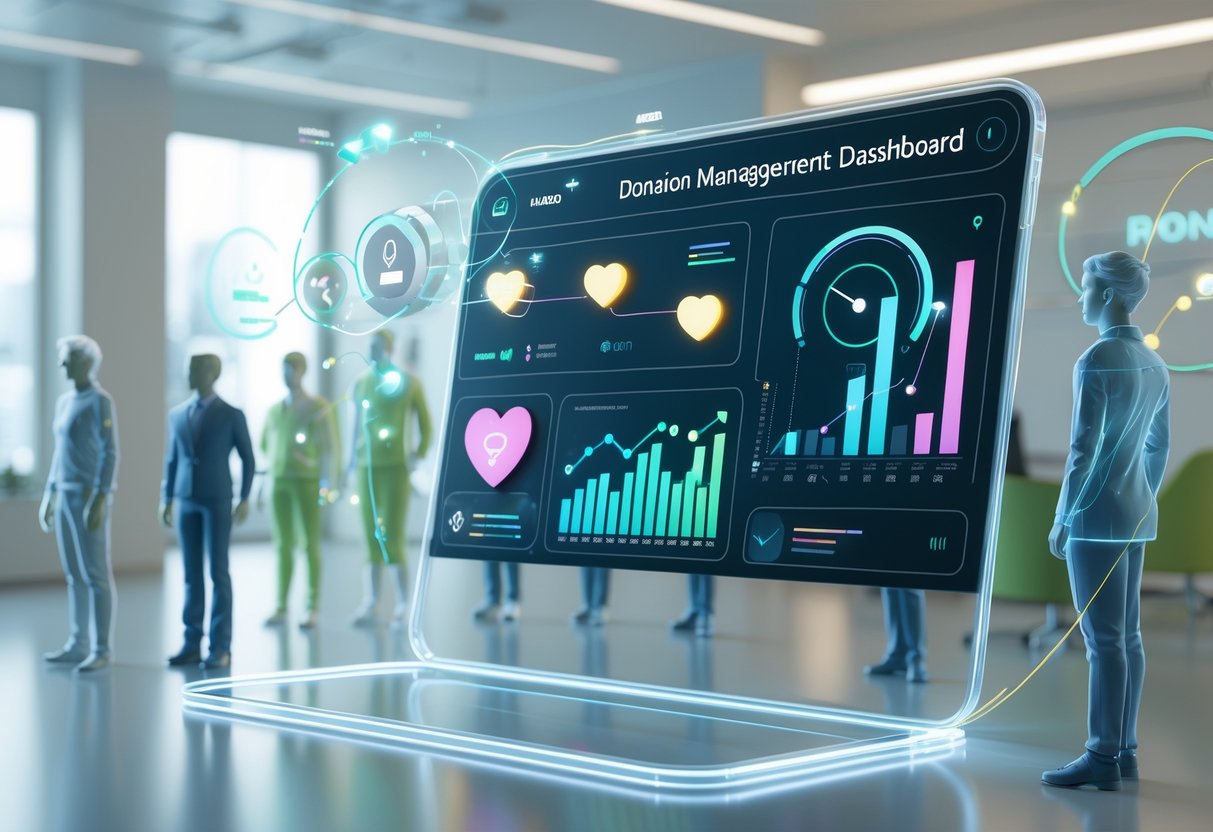
Keeping donors engaged means tracking key metrics and running programs that make people feel appreciated. The best retention strategies measure what matters, offer real loyalty perks, and recognise supporters in ways that feel personal.
Measuring Donor Retention
We track specific numbers to see how well we’re holding onto donors. The donor retention rate shows what percentage of people give again in a set period.
Key things to watch:
- First-year retention rate
- Multi-year retention
- Monthly giving retention
- Average gift size over time
Most nonprofits keep about 40–50% of first-time donors. Monthly givers are a different story—they often stick around at rates above 80%.
We check retention every quarter. This helps us spot issues early and tweak our approach if needed.
Tools we use:
- CRM software with retention tracking
- Donor lifecycle reports
- Giving pattern analysis
- Lapsed donor lists
Regular reviews help us spot donors who might drop off, so we can reach out before they’re gone.
Implementing Loyalty Programmes
Loyalty programmes reward steady donors and encourage them to stick around for the long haul. The most successful ones offer something real—not just a pat on the back.
What works:
- Tiered giving levels with actual perks
- Monthly giving clubs with special updates
- Volunteer opportunities for donors
- Behind-the-scenes access
Monthly giving programmes work especially well. They bring in steady income and build better relationships. We offer easy payment options and make sure donors know the impact they’re making.
Possible benefits:
- Early access to reports
- Exclusive events or webinars
- Updates on special projects
- Direct lines to leadership
We want donors to feel like insiders, not just ATMs. The idea is to make them partners in our mission.
We have to deliver on what we promise. If we say quarterly updates, we stick to that schedule.
Donor Recognition Strategies
Recognition means saying thanks in ways that actually matter to each donor. People have different preferences, so we mix it up.
Public ways to recognise:
- Listing names in annual reports
- Website donor walls
- Shout-outs on social media
- Recognition at events
Private ways:
- Personal thank-you calls
- Handwritten notes from people helped
- Impact reports with real results
- Anniversary messages
Ask new donors how they want to be recognised. Some love public thanks, others prefer to keep it quiet.
Timing is key:
- Thank donors within 48 hours
- Send impact updates every quarter
- Celebrate giving anniversaries
- Recognise big milestones
Personal touches work best. Skip the generic letter—mention the project they supported and how their gift helped.
The most meaningful recognition connects donors to real change. Show them the difference they made.
Maximising Fundraising Campaigns and Events
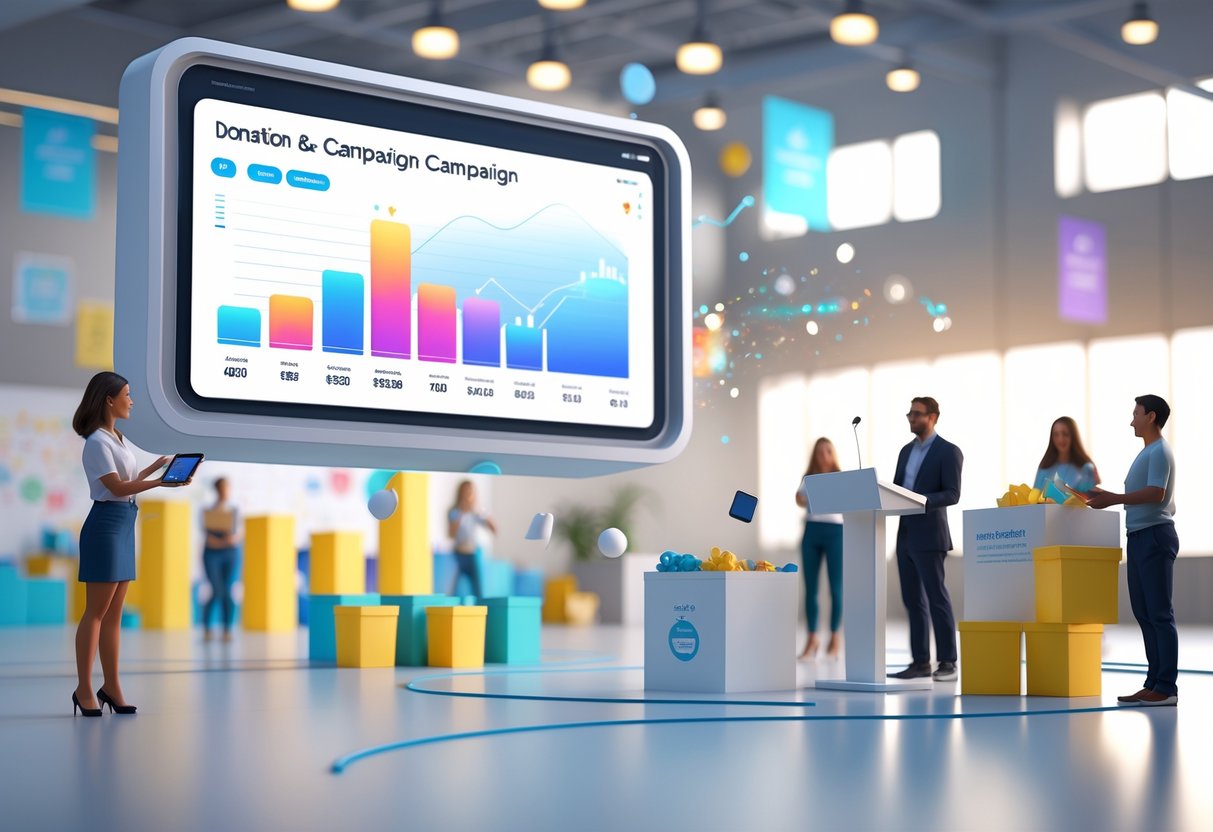
Great fundraising mixes digital tools with well-run events to reach all kinds of donors. We combine online giving, peer-to-peer networks, and memorable gatherings for the best results.
Online Fundraising Strategies
Online giving drives most modern fundraising. We focus on several digital channels to meet donors where they are.
Social media fundraising is especially good for younger supporters. Platforms like Facebook and Instagram let people give with just a few taps.
Email marketing still gets results. Newsletters keep people engaged between campaigns. We split our lists by donor history and interests for better targeting.
Top online fundraising channels:
- Website donation pages with easy giving
- Social media campaigns with shareable content
- Personalised email marketing
- Text-to-give at events
- Crowdfunding for specific projects
We keep donation forms simple and mobile-friendly. Every extra step loses donors, especially on phones.
Direct mail still appeals to older donors. Mixing traditional and digital methods lets us see which ones work best for each group.
Peer-to-Peer Fundraising
Peer-to-peer fundraising lets our supporters become active fundraisers for our cause. This approach helps us reach people far beyond our usual donor list.
Supporters set up personal fundraising pages that connect to our main campaign. They share these pages with friends, family, and coworkers who already trust their judgment.
Essential peer-to-peer elements:
- Simple fundraising page templates
- Social sharing tools and ready-to-use messages
- Progress tracking and milestone celebrations
- Support materials like images and talking points
- Regular updates to keep fundraisers engaged
We need to give clear guidance on fundraising goals. When volunteers have realistic targets, they feel more confident asking their networks for help.
Recognition programmes really boost participation. If we highlight top fundraisers and share their stories, others feel inspired to jump in.
Training sessions make a big difference. Lots of folks want to help but feel awkward asking for money. A little guidance goes a long way and makes fundraising less scary.
Planning Fundraising Events
Good events create lasting memories and help us build stronger donor relationships. They also open doors to new supporters through the people who attend.
Event planning essentials:
- Clear budgets with realistic income goals
- Volunteer coordination and task lists
- Venues that fit our audience
- Registration and payment systems
- Follow-up plans for new contacts
We have to balance event costs with what we expect to bring in. Fancy venues might wow major donors but can eat into ticket sale profits.
Sponsorships help cover costs while giving businesses some positive exposure. In-kind donations for things like food, printing, or auction items keep our expenses down.
Technology makes event management easier. Registration platforms, payment tools, and attendee tracking systems save us time and cut down on mistakes.
After the event, quick follow-up matters. We should reach out to new attendees within a week while the experience is still fresh. That’s how we turn event interest into lasting support.
Scalable events are a lifesaver for smaller organisations. Adding virtual options can boost attendance without driving up costs.
Leveraging Technology for Donation Management

Modern technology is changing how nonprofits collect, process, and track donations. Mobile platforms, automated systems, and streamlined donation pages work together to make giving easier for everyone.
Mobile Giving Solutions
Mobile giving has become a must-have for nonprofits. More than half of donation page visits now come from mobile devices.
Text-to-give platforms let donors give instantly with a quick text message. This works especially well during events or urgent campaigns when timing is everything.
Mobile-optimised donation pages load fast and work smoothly on phones. They use big buttons, simple forms, and designs that are easy to tap.
Key mobile giving features:
- One-tap options like Apple Pay and Google Pay
- Mobile wallet support
- QR codes linking straight to donation pages
- SMS confirmations and receipts
Mobile giving apps let donors manage recurring gifts and their account info. They can update details, check giving history, and tweak monthly donations right from their phones.
Mobile donors usually give smaller amounts than desktop donors. Still, they tend to donate more often and stick around longer.
Automation in Donation Processing
Automated systems take care of routine donation tasks for us. This cuts down on admin work and keeps donor communication consistent.
Automated receipt generation sends out thank-you emails and tax receipts right away. We can add personal touches, impact stories, and next steps for donors.
Payment automation handles credit cards, bank transfers, and recurring gifts. If a payment fails, the system tries again and notifies the donor.
Donor segmentation algorithms group supporters by:
- How much and how often they give
- How they like to communicate
- Their engagement level
- Where they live
Automated follow-up sequences build relationships with scheduled emails. New donors get welcome messages, and lapsed donors receive re-engagement notes.
Accounting software integrations record transactions and update financials automatically. We don’t have to enter data by hand, which means fewer mistakes.
Smart matching gift identification spots donors whose employers offer matching programmes. This can double the impact of a donation.
Donation Page Optimisation
Well-designed donation pages can really boost conversion rates. Even small tweaks can bring in 20-30% more donations.
Key optimisation elements:
- Clear value proposition that explains the impact
- Suggested donation amounts with smart defaults
- Trust indicators like security badges and testimonials
- Progress bars for campaign goals
- Multiple payment options including digital wallets
Page load speed matters. Donation pages should load in under three seconds to avoid losing donors.
Simple forms make giving easier. Just ask for name, email, donation amount, and payment info at first. Save extra questions for later.
A/B testing shows us what works best. Try out different headlines, button colours, suggested amounts, and layouts to see what gets results.
Social proof, like recent donor names or totals, encourages others to give. But don’t show specific amounts that might make small donors feel awkward.
Thank-you pages should confirm the donation and invite people to take another step—maybe share on social or sign up to volunteer.
Supporting Nonprofit Growth Through System Integrations

When nonprofits connect donation management to other tools, they unlock workflows that make fundraising more effective and reduce manual work. These integrations help us track members, volunteers, and corporate gifts all in one place.
Membership Management Integration
Connecting our donation system with membership management gives us a complete picture of every supporter. We can see who donates, when they renew, and which programmes they join.
Platforms like Little Green Light and Neon CRM connect directly to membership tools. Donation data flows straight into membership records.
Key benefits:
- Automatic renewal reminders
- Donation history linked to membership levels
- Single sign-in for donors and members
- Real-time membership status updates
When someone donates, their membership profile updates right away. This helps us send the right messages and avoid asking current members to join again.
The integration also shows which membership levels bring in the most donations. That helps us improve our packages and pricing.
Volunteer Management Tools
Volunteer systems and donation platforms work together to show the full supporter journey. Volunteers often become donors, and donors sometimes want to help out.
Integration reveals when volunteers also give. We can thank them for both kinds of support. The system tracks volunteer hours alongside donations.
Common features:
- Tracking volunteer hours with donation records
- Automated thank-you notes for dual supporters
- Event sign-ups linked to donor profiles
- Skills matching using donor data
When volunteers see fundraising events, they can sign up right in the system. Their volunteer history helps us assign the best roles. Long-time volunteers often make great event ambassadors.
We can see which volunteer activities lead to donations. That helps us design programmes that encourage both giving and volunteering.
Gift Matching and Pledge Tracking
Corporate gift matching and pledge management need careful tracking across several systems. Integration makes sure we don’t miss matched gifts and all pledges get recorded.
The system spots donors who work for companies with matching gift programmes. It sends reminders and tracks the matching process, often doubling donations.
Essential tracking features:
- Employer database for matching
- Automated matching gift reminders
- Pledge payment schedules and alerts
- Corporate partnership tracking
With good integration, pledge tracking becomes easy. The system sends payment reminders and updates records automatically. Staff can see which pledges need attention.
Multi-year pledges link to specific campaigns or projects. Donors get updates on how their money is used, which encourages them to finish their pledges and give again.
Future Trends in Donation Management

Donation management tech is moving fast. Artificial intelligence is making donor experiences more personal, predictive analytics help us plan, and new payment methods make giving easier than ever.
Artificial Intelligence for Personalisation
AI is changing how nonprofits connect with donors. Modern software analyses donor behaviour to create custom experiences.
Donor segmentation has gotten a lot smarter. AI looks at past giving, frequency, and engagement to group supporters automatically.
Key AI personalisation features:
- Thank-you messages that match donation size
- Custom email content based on donor interests
- Predicting the best times to ask for donations
- Suggested amounts based on donor capacity
A lot of organisations see higher response rates—sometimes up to 30%—when they use AI-driven personalisation. The tech learns from each interaction to improve next time.
Gift match programmes benefit from AI, too. The system finds employers who offer matching gifts and prompts donors to apply.
Smart donation forms now adjust in real time. If someone visits more than once, the form remembers their preferences and suggests the right amounts.
Predictive Analytics in Donation Forecasting
Predictive analytics help nonprofits plan by forecasting future donations. Data tools look at past patterns to predict what’s coming.
Analytics can predict:
- Which donors might stop giving
- Best times for major campaigns
- Seasonal trends in giving
- Donor lifetime value
Modern software includes dashboards that show projected income based on current donor behaviour.
Retention predictions are especially useful. Systems flag donors who seem less engaged so we can reach out before they leave.
Campaign planning gets easier with predictive insights. We can set realistic goals based on data, not just gut feelings.
Risk assessment tools spot issues early. If a major donor is less engaged, we can step in with a personal touch.
Emerging Payment Technologies
New ways to pay make donating easier and more flexible. Cryptocurrency donations are on the rise—some platforms now accept Bitcoin and Ethereum.
Emerging payment options:
- Digital wallets (Apple Pay, Google Pay)
- Cryptocurrency donations
- Buy-now-pay-later for bigger gifts
- Voice-activated donations on smart speakers
Mobile-first giving is becoming the norm. Text-to-give services let people donate instantly by SMS.
Subscription-style giving is growing beyond monthly donations. Some platforms let donors pause or change their recurring gifts whenever they want.
Blockchain tech promises more transparency. Donors might soon track exactly how their money gets used through distributed ledgers.
International giving is simpler now that software handles currency conversions automatically. This makes global fundraising less of a headache.
Frequently Asked Questions
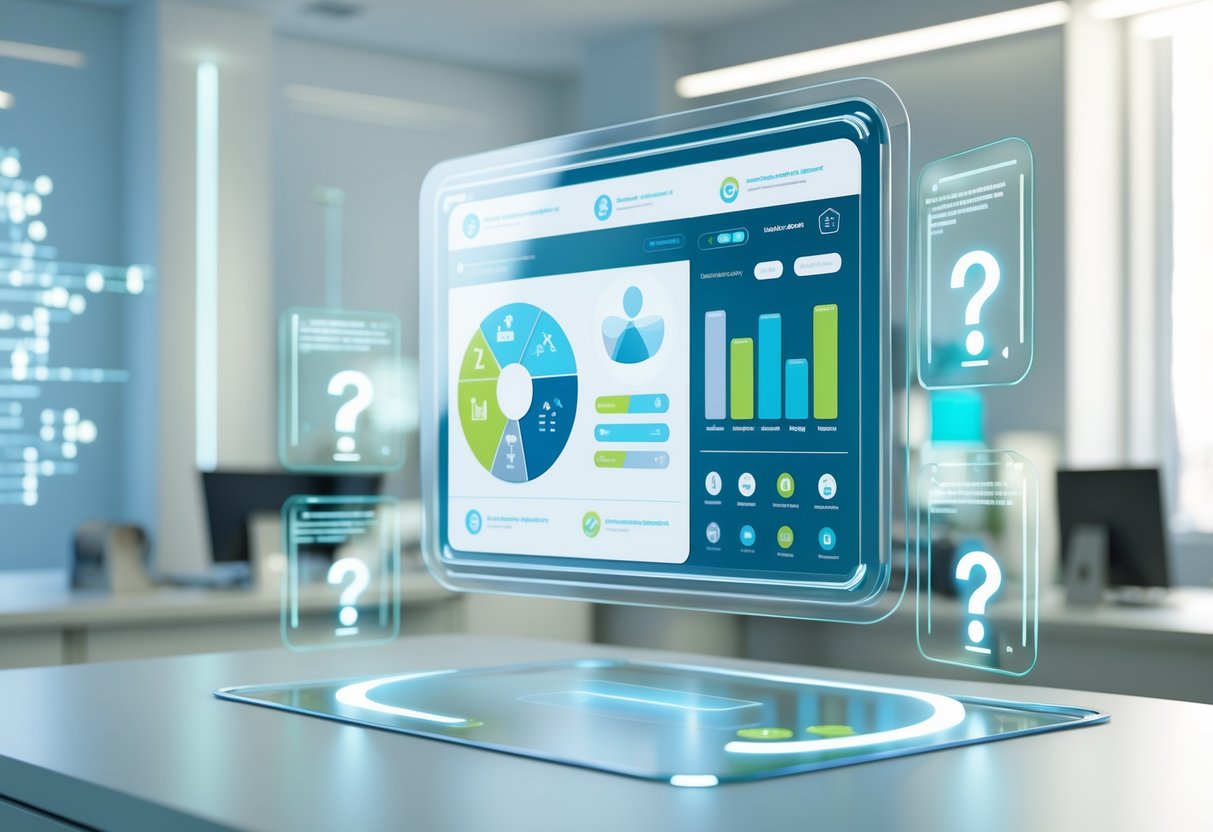
Here are answers to some of the most common questions charities have about choosing and using donation management systems. We cover software features, security, platform options, tracking, customisation, and budget-friendly solutions.
What features should I look for in donor management software for a small charity?
Small charities need simple but powerful tools that don’t overwhelm the team. An interactive dashboard with basic donation stats is a must.
Email integration helps us stay in touch with supporters. Built-in email tools let us create templates and send thank-you notes automatically.
We need software that tracks each campaign separately. That way, we can see what’s working and where to focus.
Mobile giving support is essential these days. Our donors want to give from their phones, so we need text-to-donate and mobile-friendly forms.
Even basic reporting tools help us spot trends and improve our fundraising.
How can I ensure data security in my donation management system?
Protecting data keeps both our charity and our donors safe. We should pick software that uses encryption for donor details and payments.
Look for platforms that follow data protection rules like GDPR. These systems already have the safeguards we need.
Automatic backups are a must. Our system should save copies of our data in secure places without us having to think about it.
User access controls matter. Only the right staff should see sensitive info.
Two-factor authentication adds another layer of protection. It asks for a second step when logging in.
What are the top-rated donor management platforms for not-for-profit organisations?
Several platforms work well for different charity sizes and needs. Larger organisations go for systems that handle complex donor lists and major gifts.
Mid-sized charities need a balance—good features, affordable price, and not too complicated. These usually include solid reporting and integration options.
Cloud-based solutions are getting more popular. They handle updates and security for us, so we don’t need technical know-how.
Let’s check reviews from charities like ours before choosing. What fits a big organisation might be overkill for us.
Free trials are helpful. Most top platforms let us test things out before we commit.
Is there a way to efficiently track donor engagement and history over time?
Modern donor management systems make it easy to track supporters over the long haul. We can log every interaction, from the first chat to the latest donation.
Timeline features show each donor’s full journey with us. That includes donation history, event attendance, and communication preferences.
Automated tracking records online donations and emails for us. Donor profiles update without manual entry.
Engagement scoring helps us spot our most committed supporters. These tools rank donors by how active and generous they are.
Historical data uncovers patterns. We can tell who’s ready for a bigger ask or a special campaign.
What options are available for customising donation management systems to fit unique charity needs?
Most platforms actually let you tweak things to fit your charity’s vibe and workflow. You can usually change up data fields so you’re tracking what matters most to your cause.
Form builders help us design donation pages that really reflect our branding and voice. If we need to collect extra info for our programs, custom forms make that possible.
Reporting tools often let us build dashboards from scratch. We get to pick the metrics that matter and put them front and center.
Integration? That’s a big one. We can connect our donor system with other tools we already use, like accounting software, email marketing, or even our website builder.
Workflow automation isn’t just a buzzword here. We can set up triggers so certain emails go out or tasks get assigned whenever donors take specific actions.
Can you recommend any cost-effective or free donor management tools for start-up charities?
You can actually find several free options out there if your charity’s just getting started and you’re working with a tight budget. These basic platforms let you track donors and pull up simple reports without much hassle.
If you’re ready to spend a bit, some low-cost solutions offer solid value as your organisation grows. You’ll usually see monthly fees between £10 and £50 for packages aimed at small charities.
A lot of the bigger platforms give discounts to registered charities. It’s definitely worth asking about nonprofit pricing when you’re checking out different tools.
Some systems base their charges on your number of donors or how many transactions you process. That approach can make sense if your fundraising is just getting off the ground.
Once in a while, you might find grants that help cover tech costs for new charities. Local community foundations or charity support groups might even pitch in to help you set up your donor management system.

